READER COMMENTS ON
"Discrepancies Reported in Versions of LA County E-Voting System Source Code as Submitted and Escrowed by ES&S"
(36 Responses so far...)
COMMENT #1 [Permalink]
...
Off the Grid
said on 7/10/2007 @ 9:33 am PT...
Can we just skip to Friday so Bush and Cheney can resign.
COMMENT #2 [Permalink]
...
Bob Bancroft
said on 7/10/2007 @ 10:36 am PT...
These folks working on behalf of California elections need to be extended our full support and encouragement. Just think: this is but one case.
COMMENT #3 [Permalink]
...
John Washburn
said on 7/10/2007 @ 10:55 am PT...
If the contract does not conform to State law, then can ES&S claim to have legally escrowed the source code?
Iron Mountain is in a tough spot here. If the escrow contract is between ES&S and LA County, then Iron Mountain has no choice but to prevent the release of the source code to the State of California. To do otherwise is to tell other customers of Iron Mountain that your escrowed source code is not safe with Iron Mountain. Iron Mountain will release your source code to parties outside of the escrow contract.
But, the more ES&S fights and succeeds to block the release of source code from Iron Mountain, the more ES&S loses with regard to the California escrow statute as a whole. This is because the more ES&S and LA County “win” on the Iron Mountain release matter, the more they “lose” on complying with the statutory requirement of 19103. (a) to have:
An exact copy of the source code for all ballot tally software programs certified by the Secretary of State, including all changes or modifications and new or amended versions, shall be placed in an approved escrow facility prior to its use.
COMMENT #4 [Permalink]
...
Floridiot
said on 7/10/2007 @ 11:14 am PT...
Which one has the vote flipping bug in it, the one already in use in the machines in LA County, or the software in escrow at Iron Mountain ?
COMMENT #5 [Permalink]
...
John Gideon
said on 7/10/2007 @ 11:26 am PT...
Floridiot #4 -
This is the InkaVote Plus system. It's not a DRE but a ballot marking device w/ optical scan.
COMMENT #6 [Permalink]
...
greggp
said on 7/10/2007 @ 11:37 am PT...
If the contract is contrary to state law, it could be considered void or voidable. Perhaps L.A. County should send the machines back, demand a refund, and then sue.
COMMENT #7 [Permalink]
...
Steve Heller
said on 7/10/2007 @ 11:38 am PT...
This is almost EXACTLY the same scam that Diebold was running in California (and no doubt in all the other states in which they have contracts), and the documents I exposed proved it. The certified version of the software Diebold CLAIMED they were using in their California voting machines was NOT THE SAME version they actually WERE using. After receiving state certification of their software, they took the software away and made changes to it, then used the changed software in the voting machines, not the certified software. And they willingly and knowingly LIED to the state of California by signing documents attesting to the false fact that the software they were using was the same as the certified software.
Liars, all of them. And we continue to let these criminals run our elections for us? Wake up, America! Your democracy is nearly dead; between the junta currently in power stripping away your constitutional rights and declaring itself to be above the law, to the perversion an subversion of the justice department and the federal courts, to the voting machine companies like Diebold and ES&S knowingly and willingly, with malice aforethought, subverting elections and thus our entire democracy, this country is going down fast. I really don't know if we'll ever be able to reverse or even stop the destruction of our democratic republic.
America, we hardly knew ye. Canada is looking so good to me right now...
COMMENT #8 [Permalink]
...
Paul Lehto
said on 7/10/2007 @ 11:46 am PT...
Who is in charge of elections in California?
ES&S states in its June letter that "ES&S expects that the SOS and each of the examiners will strictly comply with the NDAs...."
Apparently, ES&S does NOT expect that IT will have to "strictly comply" with California law or the requests of the highest elected officials in the state of California regarding elections.
Source code is only one of many things that have to be checked for a top to bottom review. In and of itself source code is a small item, but if unreviewed it is a safe haven for irregularity and fraud, and therefore looms larger in a state of un-review than it would if reviewed.
But it's clear that the people of the state of California are not fully in charge of their own elections, according to ES&S.
COMMENT #9 [Permalink]
...
ccokz
said on 7/10/2007 @ 11:53 am PT...
{Ed Note: Comment spam removed.}
COMMENT #10 [Permalink]
...
the_zapkitty
said on 7/10/2007 @ 12:01 pm PT...
... John Gideon said...
"Floridiot #4 - This is the InkaVote Plus system. It's not a DRE but a ballot marking device w/ optical scan"
Er... John... this invalidates Floridiot's question... how?
If I recall correctly opscans were the first machines to be publicly hacked with vote-flipping software, right?
COMMENT #11 [Permalink]
...
Dredd
said on 7/10/2007 @ 12:01 pm PT...
Jerry Brown is the Attorney General of California now. Time for him to open a can of whupass.
The other arrogant election machine companies need to see ES&S's knickers pulled down and their little arse reddened with the people's paddle.
COMMENT #12 [Permalink]
...
Floridiot
said on 7/10/2007 @ 12:18 pm PT...
Yup, I was thinkin the same thing.
It doesn't matter what kind of system it is, it still has flipping software in it, with a verifiable paper ballot that they won't let us look at.
COMMENT #13 [Permalink]
...
John Gideon
said on 7/10/2007 @ 12:34 pm PT...
Zap and Floridiot
I really can't recall any reports of vote switching on optical-scan machines. I'm not saying it hasn't happened; it just hasn't been reported.
Yes, they can be hacked. No doubt about it and I'm not supporting optical-scan over DREs.
COMMENT #14 [Permalink]
...
Floridiot
said on 7/10/2007 @ 1:06 pm PT...
John...Hacking Democracy?
COMMENT #15 [Permalink]
...
the_zapkitty
said on 7/10/2007 @ 1:12 pm PT...
Ahhh... got it. You're referring to the "Push one candidate and another candidate gets the vote" routine often witnessed on DRE's.
But the term "flipping" has often been used in speaking of the internals of voting software design which is how I took Floridiot's meaning.
Not quite as urgent as clearing up the "election fraud" vs. "voter fraud" errors... 
COMMENT #16 [Permalink]
...
Ted M.
said on 7/10/2007 @ 1:19 pm PT...
If Los Angeles thinks they have problems with ES&S, we in San Diego have Deborah Seiler as our County Registrar. After the county bought 10,000 Deibold machines in 2003, we hire their sale representative as our county registrar..who knew?!
http://www.nctimes.com/a...iego/21_11_105_11_07.txt
COMMENT #17 [Permalink]
...
JuliePatchouli
said on 7/10/2007 @ 1:32 pm PT...
John in 13 said:
Zap and Floridiot
I really can't recall any reports of vote switching on optical-scan machines. I'm not saying it hasn't happened; it just hasn't been reported.
Yes, they can be hacked. No doubt about it and I'm not supporting optical-scan over DREs.
************************************
Precinct 66 (FL-24) in Seminole County Florida AFFIDAVITS collected by people volunteering for Clint Curtis has reported our results to be 6%-24 different from the official results. Precinct 66 all voting types, but our descrepancy (I believe) was Omniscan machines, where the paper ballot is not countable once it is fed thru the Omniscan machines (which Charlie Crist is trying to ram thru in Florida for 2008.)
Just because the House Admin Committee dismissed the case doesn't mean that vote flipping for Omniscan machines has not been reported.
COMMENT #18 [Permalink]
...
Brad Friedman
said on 7/10/2007 @ 2:05 pm PT...
Just to clear things up, I believe Gideon was referencing the "vote flipping" that we've seen reported many times on touch-screen DRE systems.
A semantic confusion. Obviously, results are frequently flipped (either on purpose or via programming errors) on op-scan systems as well as DRE systems.
COMMENT #19 [Permalink]
...
Mark S
said on 7/10/2007 @ 2:08 pm PT...
I'm not an optimist.
I've been saying since before Bowen became SOS, that the most we can expect of Bowen is to run out the clock through hearings, reviews, and investigations, and then, just prior to elections, issue waivers to all the voting machines, even those which Bowen might decertify, in the interests of holding elections.
Look people, HAVA, Congress, State and local elections officials, and the voting machine vendors stole your tax money fair and square--billions of dollars of it, and they used it to install machines to steal your vote. They're not giving either the money or the vote back--that's not how they operate. And even if they go to prison, like Bob Ney, the author of HAVA, the courts can't order them to make restitution to democracy.
The Holt bill, the Feinstein bill, and any other election legislation other than Kucinich's hand-counted paper ballots bill, are designed to steal more taxpayer money and more votes. Was it Bev Harris who first described voting machines as $7,000 pencils? Which wouldn't be so bad except that they write with invisible lead and you need more machines to read them--and you can never prove whether they were tallied correctly or not.
Brad and a lot of others have touted the benefits of having a paper ballot. I'm in San Diego and we learned the hard way that having a paper ballot is like having a ticket to a ball game that was over two days ago. The ticket is valid, but the game's over, so it is useless. Unless that paper ballot is hand counted on election night in full public view, with no machines that can cast doubt on the results and throw the election to Congress or the courts, it isn't worth the paper it's printed on.
What would paper ballots have proven in the Christine Jennings case? That 18,000 votes were lost? But we already know that, even without a paper trail. And Democrat Pelosi chose to swear in Republican Buchanan anyway, because Pelosi needed more Republican votes to help keep impeachment off the table. And if you'd had paper ballots in Sarasota, and had gone to Pelosi with those paper ballots and shown that Jennings had really won with a huge majority, Pelosi still wouldn't have sworn in anybody who might not have helped Pelosi keep impeachment off the table. Clint Curtis had sworn affidavits from voters, and Pelosi wouldn't even look at them. It isn't as if Pelosi cares about voters, any more that Bush and Cheney do.
I hope I'm wrong about Bowen. It would be nice to be wrong for a change. 
COMMENT #20 [Permalink]
...
Floridiot
said on 7/10/2007 @ 2:20 pm PT...
If they don't let us see that code pretty soon, I think we can throw out the "programming error" thingie 
COMMENT #21 [Permalink]
...
Mark S
said on 7/10/2007 @ 2:21 pm PT...
COMMENT #22 [Permalink]
...
BOB YOUNG
said on 7/10/2007 @ 2:34 pm PT...
John
Nobody can see vote flipping on the opscams but that sure does not mean it is not there. I believe TRUTHIS ALL was among those who posted here that the opscams were likely switching more votes in Florida than the Dre's based on the exit poll data. The fact that a crime can be hidden doesn't make it any less of a crime.
COMMENT #23 [Permalink]
...
Brad Friedman
said on 7/10/2007 @ 2:47 pm PT...
Mark S. said:
What would paper ballots have proven in the Christine Jennings case? That 18,000 votes were lost? But we already know that, even without a paper trail.
Please don't conflate paper ballots with paper trails. Had we had paper ballots, marked by the voter, not only wouldn't there have been 18,000 "lost" votes, but if there had been --- as reported, for example, by op-scan machines --- we'd have been able to go back and determine the true intent of the voters.
Adding paper trails to the touch-screen DRE systems used in Sarasota, would, of course, have been useless. Despite so many in the Election Integrity community (including Rep. Rush Holt) arguing, without evidence, that Holt's mandated DRE "paper trails" would have made a difference in that election. It wouldn't have.
Paper ballots however, would have!
COMMENT #24 [Permalink]
...
John Gideon
said on 7/10/2007 @ 2:55 pm PT...
Everyone. Take a deep breath. I know that optical scan machines can be hacked and I know that they are just as apt to report the incorrect results as any other system in use.
However, I am also a researcher/compiler/reporter and I have to go on reported instances. I have never read an instance where a voter has claimed that an optical scan machine changed their vote. There may be anecdotal evidence but that's it.
Let's not let this distract us from the information that is in this article.
COMMENT #25 [Permalink]
...
bjobotts
said on 7/10/2007 @ 4:26 pm PT...
They will not easily give up anything that might incriminate them which means the source code held in Escrow will probably incriminate them. By this point in time I don't know why they just don't seize the code before some "accident" befalls it. Amazing how incriminating evidence has a way of getting "lost" before it can be proved to be incriminating.
Good work Brad at keeping this public issue public. The more eyes on it the better. Thanks...Joe in Spfd.MO
COMMENT #26 [Permalink]
...
CharlieL
said on 7/10/2007 @ 4:34 pm PT...
BJOBOTTS:
Well, in this case, if the code went "missing" it might do to Iron Mountain what the Enron affair did to a "Big Five" accounting firm called Arthur Anderson. (Lesson to corporate monsters: You're never too big to go down.)
As soon as your escrow service "loses" something this important, other government entities are going to stop thinking of (or allowing) Iron Mountain to be used as an escrow.
COMMENT #27 [Permalink]
...
bjobotts
said on 7/10/2007 @ 4:45 pm PT...
SEE WHAT A FIASCO THIS SIMPLE REQUEST HAS TURNED INTO.
We have a problem here so show us the source code you have in escrow.
No, you can't have the one in escrow, but here take this one it should be the same. How are we going to know if we don't get the original source code you are holding in Escrow?
This is my vote. I don't want it privatized or the way of checking how my vote was registered and counted, held in some secret coded machine software by a private company which I must petition to check if their voting machines are operating properly. Am I the only one who sees this as a recipe for disaster?
Keep up the good work Brad Blog. Our whole system of government rests on this, so thanks.
COMMENT #28 [Permalink]
...
molly
said on 7/10/2007 @ 5:54 pm PT...
Common Cause had an article in the Bangor News in Maine advocating H.R.811.
COMMENT #29 [Permalink]
...
BOB YOUNG
said on 7/10/2007 @ 7:03 pm PT...
John
You never will hear from anybody who seen his vote switched by a opscam. The flippy can not be seen. That is no indication whatsoever that it is not happening. The only clue we can get is from the exit polls since the won't let us count the ballots. The exit polls have been screaming loud and clear that they have indeed been switching votes in a set direction in recent elections. They may well have been doing so long ago but nobody was watching like they have been recently. As an expert in probability theory I sure can't come up with any reason to put any more faith in the opscams than the dre's! An optimist might call then opscans but I sure don't!
COMMENT #30 [Permalink]
...
Jerry Berkman
said on 7/10/2007 @ 11:34 pm PT...
Why would you expect the escrowed version to match the version being used? After the Diebold scandal in 2003, Conny McCormack told the Los Angeles Times:
"All of us have made changes to our software - even major changes - and none of us have gone back to the secretary of state. But it was no secret we've been doing this all along."*
Also, Brad, you said state law allows up to $10,000 per offense. But the California Elections Code section 19214.5 states:
"For purposes of this subdivision, each voting machine found to contain the unauthorized hardware, software, or firmware shall be considered a separate violation."
So, if the 5,000 InkaVote+ machines in Los Angeles all have a version not in escrow, that is a fine up to $50,000,000! And ES&S has a lot of other business in the state, with the AutoMARK system, so they won't want to just pull out.
- Jerry
* The McCormack quote is cited on several web pages, including:
By Kim Alexander, California Voter Foundation,
By Doug Jones,
In the ACM Risks forum,
etc.
COMMENT #31 [Permalink]
...
Dave Berman
said on 7/11/2007 @ 1:17 am PT...
Point of clarification for you, Brad. The R&G audits ordered by Shelley revealed that uncertified software was installed by Diebold in 17 CA counties, but this included optical scan as well as DRE systems. I've been particularly interested in this point for a quite a while, attempting to determine who approved or allowed such illegal tampering with our equipment here in Humboldt County. That this happened seems to me to be proof of either complicity or negligence on the part of one or more people in our elections department. My investigation has not resolved this to my satisfaction. I've always encouraged people in the other impacted counties to research this too. The questions are the same.
COMMENT #32 [Permalink]
...
Shannon Williford
said on 7/11/2007 @ 5:38 am PT...
Julie, #17
So Florida isn't going to recountable paper ballots???
So Christ isn't the hero he's been made out to be in our election reform movement? If what you say is true, he's just another sleazy Pub...
What's the story?
shw
COMMENT #33 [Permalink]
...
Tom Martin
said on 7/11/2007 @ 8:14 am PT...
Black box voting on unverifiable systems - an abysmally stupid idea.
As Bad as the Florida 2000 vote tally was - at least there were real ballots to argue over - and that punch card system could be corrected for less than a dollar's worth of parts per machine with a flash light bulb and D size battery - punch through completely and the light goes on when the stylus completes the circuit - gees rocket science.
These computerized machines:
Source code should be public domain, a smart high school kid could write these systems. Easily verifiable check sums on the source code and executable code. The hardware should be easily examinable - not only are wireless connections a potential problem - the power grid can be used as a network as well.
Multiple logs recording every keystroke are easily faked on the fly. I write database triggers every day - it would be cake to display one thing on the screen (what the voter thinks they are doing) record what you want in as many 'audit' logs as desired.
Best solution:
Paper ballots counted at each and every precinct. True more labor intensive - but if your going to 'fix' a major election - a lot more risky collusion will be required to pull it off then with these magic black boxes. But what do I know, I'm only a database administrator and programmer with over 20 years in the biz.
A bigger problem - controlling who you may vote for no matter how the ballots are counted. Who is Carl Romanelli?
COMMENT #34 [Permalink]
...
Patriot
said on 7/11/2007 @ 10:25 am PT...
Folks,
There is one secure system, and one secure system only: PAPER BALLOTS, HAND COUNTED. The sooner we prove to the majority of American that every other option is an invitation to election theft, the sooner we can get to the one and only solution and the reinstatement of our representative republic (which we lost in Dec. 2000). Fortunately, the "Holt" Bill, HR-811, is seeing more an more resistance --- as it should because it is a clear prescription for dictatorship --- and, best of all, Dennis Kucinich is introducing a new bill (as yet unnumbered) that will REQUIRE PAPER BALLOTS, HAND COUNTED FOR ALL PRESIDENTIAL ELECTIONS STARTING WITH THE 2008 ELECTION. Folks, get on top of this now; starting calling and writing your "representatives" and DEMANDING that Kucinich's bill pass and not the Holt Dictatorship bill. Act as if your life depends on it; it does.
COMMENT #35 [Permalink]
...
Doug Cragoe
said on 7/13/2007 @ 6:08 pm PT...
In L.A. the InkaVote Plus machines are only used to notify voters of an undervote or an overvote. Many millions of HAVA money went for this purpose only. The machines can tabluate votes, but I doubt if they ever will because I've heard they fail too often.
L.A.'s current vote tabulation system has not been looked at by state election officials for many years. I believe the last time they looked was 1998. We've had changes to our software since then. Our registrar said a few years ago that L.A. and other counties make changes to software without notifying the secretary of state. Once GEMS2 passes federal and state certification we will have a Diebold system counting all the votes here.
There is something wrong with the escrow process and state law if the secretary of state cannot easily get at the escrowed source code.
COMMENT #36 [Permalink]
...
Dredd
said on 7/15/2007 @ 6:07 am PT...
Patriot #34 said:
There is one secure system, and one secure system only: PAPER BALLOTS, HAND COUNTED
As I have sedd ad nauseum, paraphrasing Stalin:
"The people who cast paper ballots decide nothing, it is the people who count the paper ballots who decide everything."
Stalin was pre-computer but not pre-dishonesty. That human essence is everywhere isn't it?
Bob Young #29 said:
They may well have been doing so long ago but nobody was watching like they have been recently.
I am not so sure about that and therefore suggest that you read this 1988 article and this 1988 NIST Report. They describe electronic voting issues going back to 1964 ... over 40 years.
Bob also said:
As an expert in probability theory I sure can't come up with any reason to put any more faith in the opscams than the dre's! An optimist might call then opscans but I sure don't!
And that really is the bottom line Bob, faith.
There are varying degrees of faith in the american election system. I have never heard anyone express absolute faith in that system, however, often I hear people say they feel "better" about one system over another.
Subconsciously we know the truth. The truth is that there is an element of religiousity to our election system, founded upon faith.
That is why the election integrity movement has so many of the characteristics of religious faith. Dogma, sectarianism, and sectarian wars, which Brad has described as "just short of a shooting war".
 The results of California Secretary of State Debra Bowen's "top-to-bottom review" of electronic voting systems previously approved for use by her predecessor is still underway. But before any of the findings from her teams of security specialists, software analysts and voting systems experts have been made public, the unprecedented analysis has already revealed a disturbing anomaly which may have far-reaching implications for both state and federal voting systems laws across the country.
The results of California Secretary of State Debra Bowen's "top-to-bottom review" of electronic voting systems previously approved for use by her predecessor is still underway. But before any of the findings from her teams of security specialists, software analysts and voting systems experts have been made public, the unprecedented analysis has already revealed a disturbing anomaly which may have far-reaching implications for both state and federal voting systems laws across the country.




 Kamala Rising:
Kamala Rising: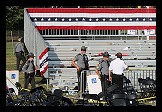 Evidence Fails to Establish Attempted Trump Assass-ination Politically Motivated
Evidence Fails to Establish Attempted Trump Assass-ination Politically Motivated Former MAGA 'Cultist' on the State of the Race for 'MAGA Americans': 'BradCast' 7/23/24
Former MAGA 'Cultist' on the State of the Race for 'MAGA Americans': 'BradCast' 7/23/24  'Green News Report' 7/23/24
'Green News Report' 7/23/24
 Biden Out, Endorses
Biden Out, Endorses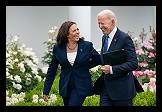 BIDEN DROPS REELECTION BID
BIDEN DROPS REELECTION BID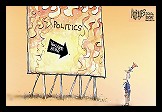 Sunday 'You Are Here' Toons
Sunday 'You Are Here' Toons What J.D. Vance Forgot to Tell You (and Lied About) at the RNC: 'BradCast' 7/18/24
What J.D. Vance Forgot to Tell You (and Lied About) at the RNC: 'BradCast' 7/18/24 'Green News Report' 7/18/24
'Green News Report' 7/18/24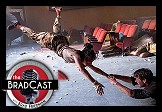 Holding on for Dear Life Amid the Political Whirlwind: 'BradCast' 7/17/24
Holding on for Dear Life Amid the Political Whirlwind: 'BradCast' 7/17/24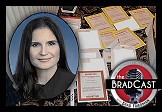 Cannon's Corruption: 'BradCast' 7/16/24
Cannon's Corruption: 'BradCast' 7/16/24 'Green News Report' 7/16/24
'Green News Report' 7/16/24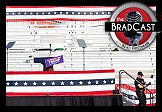 Amid the Assassination Attempt Aftermath:
Amid the Assassination Attempt Aftermath:
 Meanwhile... : 'BradCast' 7/11/24
Meanwhile... : 'BradCast' 7/11/24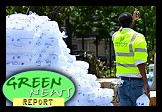 'Green News Report' 7/11/24
'Green News Report' 7/11/24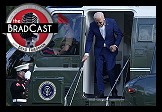 Paging 'Johnny Unbeatable'! Dems (Actually!) in Disarray!: 'BradCast' 7/10/24
Paging 'Johnny Unbeatable'! Dems (Actually!) in Disarray!: 'BradCast' 7/10/24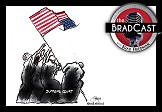 SCOTUS Immunity Ruling 'As Bad as it Sounds', And Worse: 'BradCast' 7/9/24
SCOTUS Immunity Ruling 'As Bad as it Sounds', And Worse: 'BradCast' 7/9/24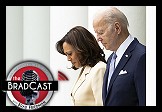 So, What Now?: 'BradCast' 7/8/24
So, What Now?: 'BradCast' 7/8/24 Debunking MAGA Cult Xenophobia
Debunking MAGA Cult Xenophobia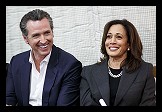 A Friendly Suggestion: Harris-Newsom 2024
A Friendly Suggestion: Harris-Newsom 2024 Prosecutor: SCOTUS Corruption Ruling Less Corrupt Than Appears: 'BradCast' 6/27/24
Prosecutor: SCOTUS Corruption Ruling Less Corrupt Than Appears: 'BradCast' 6/27/24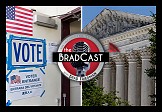 Good News and Bad: At the Polls and From the Corrupted Court: 'BradCast' 6/26/24
Good News and Bad: At the Polls and From the Corrupted Court: 'BradCast' 6/26/24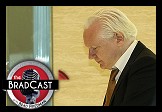 'Emptywheel' on Assange Hacking, Plea Deal: 'BradCast' 6/25/24
'Emptywheel' on Assange Hacking, Plea Deal: 'BradCast' 6/25/24
 VA GOP VOTER REG FRAUDSTER OFF HOOK
VA GOP VOTER REG FRAUDSTER OFF HOOK Criminal GOP Voter Registration Fraud Probe Expanding in VA
Criminal GOP Voter Registration Fraud Probe Expanding in VA DOJ PROBE SOUGHT AFTER VA ARREST
DOJ PROBE SOUGHT AFTER VA ARREST Arrest in VA: GOP Voter Reg Scandal Widens
Arrest in VA: GOP Voter Reg Scandal Widens ALL TOGETHER: ROVE, SPROUL, KOCHS, RNC
ALL TOGETHER: ROVE, SPROUL, KOCHS, RNC LATimes: RNC's 'Fired' Sproul Working for Repubs in 'as Many as 30 States'
LATimes: RNC's 'Fired' Sproul Working for Repubs in 'as Many as 30 States' 'Fired' Sproul Group 'Cloned', Still Working for Republicans in At Least 10 States
'Fired' Sproul Group 'Cloned', Still Working for Republicans in At Least 10 States FINALLY: FOX ON GOP REG FRAUD SCANDAL
FINALLY: FOX ON GOP REG FRAUD SCANDAL COLORADO FOLLOWS FLORIDA WITH GOP CRIMINAL INVESTIGATION
COLORADO FOLLOWS FLORIDA WITH GOP CRIMINAL INVESTIGATION CRIMINAL PROBE LAUNCHED INTO GOP VOTER REGISTRATION FRAUD SCANDAL IN FL
CRIMINAL PROBE LAUNCHED INTO GOP VOTER REGISTRATION FRAUD SCANDAL IN FL Brad Breaks PA Photo ID & GOP Registration Fraud Scandal News on Hartmann TV
Brad Breaks PA Photo ID & GOP Registration Fraud Scandal News on Hartmann TV  CAUGHT ON TAPE: COORDINATED NATIONWIDE GOP VOTER REG SCAM
CAUGHT ON TAPE: COORDINATED NATIONWIDE GOP VOTER REG SCAM CRIMINAL ELECTION FRAUD COMPLAINT FILED AGAINST GOP 'FRAUD' FIRM
CRIMINAL ELECTION FRAUD COMPLAINT FILED AGAINST GOP 'FRAUD' FIRM RICK SCOTT GETS ROLLED IN GOP REGISTRATION FRAUD SCANDAL
RICK SCOTT GETS ROLLED IN GOP REGISTRATION FRAUD SCANDAL VIDEO: Brad Breaks GOP Reg Fraud Scandal on Hartmann TV
VIDEO: Brad Breaks GOP Reg Fraud Scandal on Hartmann TV RNC FIRES NATIONAL VOTER REGISTRATION FIRM FOR FRAUD
RNC FIRES NATIONAL VOTER REGISTRATION FIRM FOR FRAUD EXCLUSIVE: Intvw w/ FL Official Who First Discovered GOP Reg Fraud
EXCLUSIVE: Intvw w/ FL Official Who First Discovered GOP Reg Fraud GOP REGISTRATION FRAUD FOUND IN FL
GOP REGISTRATION FRAUD FOUND IN FL


































